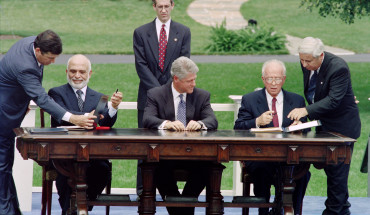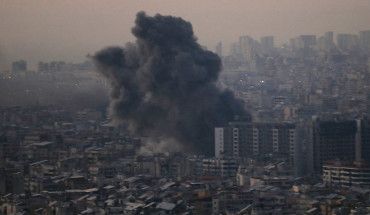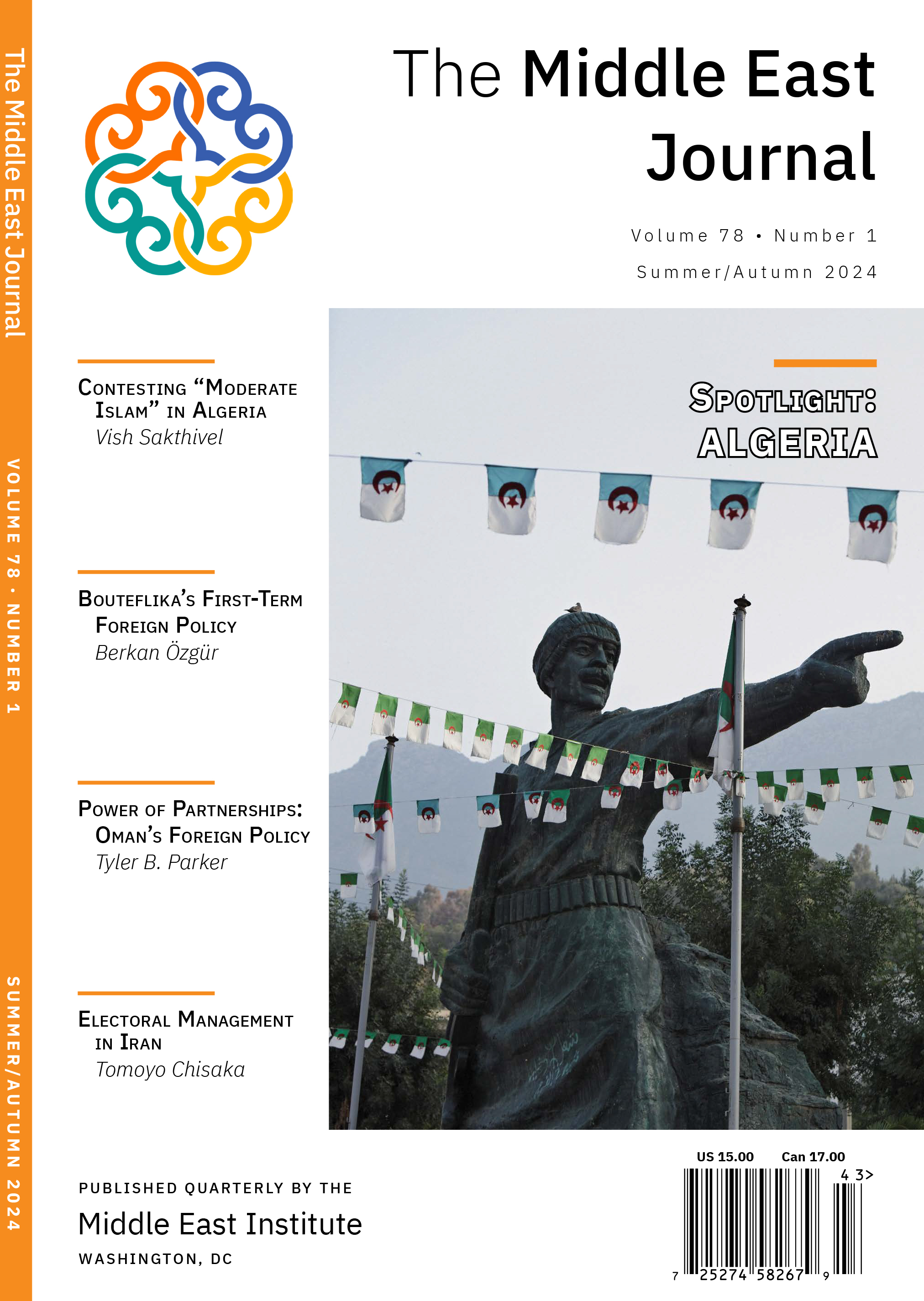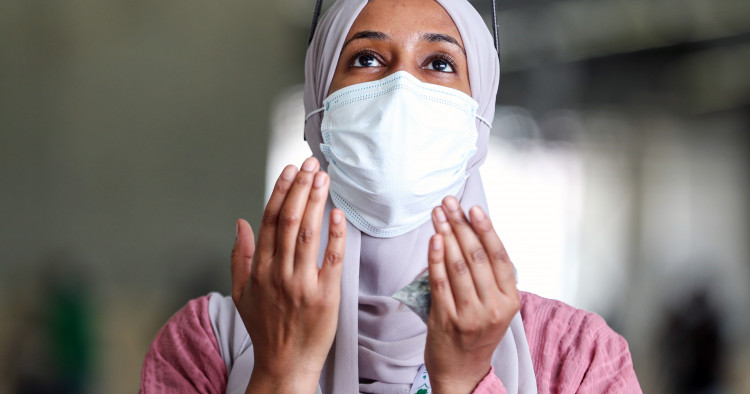This article is part of the series on “COVID-19 in the Middle East and Asia: Impacts and Responses”. Read more ...
Like economic crisis, disease outbreaks affect women and men differently, and pandemics worsen existing social and gender inequalities. Gendered effects of COVID-19 on women have been discussed in terms of job, income and mobility losses; increased demands on women’s domestic labor and time burdens to homeschool children and care for the sick and elderly; domestic violence spikes as stay-at-home orders expand; expulsions of refugees or migrants; and vulnerability to the virus in feminized sectors such as healthcare, schooling, the food industry, and other frontline or essential sectors. These impacts extend to the Middle East/North Africa (MENA) region, but MENA has several distinctive features.
Apart from the diversity of economic resources, wealth, and political systems across the region, MENA countries have very low levels of female labor force participation (FLFP) and high rates of youth unemployment, especially among women. Some households employ domestic workers, who are not covered by labor legislation. The Gulf Cooperation Council (GCC) countries, as well as Jordan and Lebanon, employ large numbers of migrant domestic workers (MDWs), largely from south and southeast Asia, who lack labor rights. GCC countries also employ large numbers of expatriate health professionals.[1] Gender-discriminatory laws, policies, and norms prevail, such as family laws that place women under the guardianship (or control) of male kin. Strict laws on violence against women have only recently been introduced, and not everywhere. Lebanon, Morocco, and Tunisia have a high debt-to-GDP ratio, and Iran and Syria suffer punishing US sanctions. Most of the middle-income countries have seen two decades of deteriorating public services, in public health as well as schooling. Outside the GCC, the MENA region is the least integrated in economic cooperation, and development cooperation across countries is almost negligible.[2] Finally, the region is characterized by high military spending (especially by GCC countries), ongoing conflicts, and refugee populations. Such institutional and socio-demographic features affect the diffusion and experience of COVID-19 across the region and its diverse populations.
This article focuses on the impact of the pandemic on MENA women’s economic participation. Available evidence suggests that women in public sector jobs have been largely protected, albeit in different ways across countries, and yet women’s unemployment rates have increased. Longer-term adverse effects could be mitigated by government action, such as social provisioning for working mothers and other measures for women’s labor market attachment. The paper ends with two contrasting scenarios for a post-pandemic future.
Women’s Labor in the MENA Region: An Overview
MENA FLFP is generally low, especially among married women with children and those with secondary schooling or less.[3] The regional average is 27%, according to IMF and World Bank data. In 2019, Egyptian women made up about 50% of the population but just 23% of the total labor force compared to 70% for men. Women’s marginal position in the private sector reduces their overall labor force shares and participation rates, but their public sector employment is higher. Female shares in the professions have risen steadily in many countries since the 1990s, with “feminization” occurring in education, social services, pharmacology, and the law. Women’s unemployment rates, especially those of young, college-educated women, run into the double digits.
Even before the pandemic, neither social norms nor public policies encouraged women’s labor incorporation. Although all MENA countries require some degree of paid maternity leave, it remains the financial responsibility of the employer and in some countries is of very short duration. Only in Iran and four Arab countries — Algeria, Morocco, Tunisia, and Jordan — is paid maternity leave covered through the social security/social insurance system. Tunisian women are fully covered only in the public sector, but income replacement in the private sector is 66% and maternity leave is longer in the public sector than in the private sector.[4] Such discrepancy, common to other MENA countries, contributes to the observed wage discrimination against women in the private sector.[5] Working mothers face additional challenges. School starts at age six and public pre-school facilities are rare. In interviews in Jordan in 1996, I found that women employees stressed the need for institutionalized and affordable “baby care.” Similarly, Ilkkaracan underscores the lack of work-family reconciliation measures as an important part of the explanation for low FLFP in Turkey (and elsewhere), and a 2020 UN Women study draws attention to the highly unequal distribution of domestic care work in the Arab States.[6]
In 2020, international organizations were predicting declining human development and poverty for MENA, especially within working-class and rural communities, and for those in the informal sector and small businesses.[7] Youth unemployment rates would increase. A 2020 ESCWA policy brief estimated that out of some 1.7 million jobs that would be lost in the Arab region, fully 700,000 of them would be women’s jobs.[8] Labor-exporting MENA countries — among them Egypt, Jordan, and Lebanon — would experience rising unemployment and related effects of return migration and cessation of remittances.[9] Tourist-destination countries would suffer, along with the workers and enterprises involved in the tourism sector. The closure of childcare centers and schools and the departure of nannies would compel some working mothers to leave the labor force, while others would be furloughed or dismissed. Lockdowns and reduced mobility in the wake of the pandemic would mean that women’s care for the home, children, and elderly relatives would be intensified. For girls from lower-income families, school closures would lead not only to loss of learning but also the probability of early marriage. The loss of male breadwinners through death, illness, or unemployment would have a heavy toll on women and households.
COVID-19’s Heavy Toll on Women and Households Across the MENA Region
Predictions that the pandemic would have wide-ranging, adverse effects on women and households in the MENA region largely were realized. GDP has declined almost everywhere, many firms fell into financial distress, and household incomes have contracted.[10] Tunisia and Morocco reported increases in domestic violence in the months following the pandemic and the lockdowns.[11] Small- and medium-sized businesses (SMEs) were hit hard. A June 2020 OECD report cited a Tunisian official that women’s informal labor in agriculture and as domestic workers made them especially vulnerable to job losses and that “most women-led SMEs are closed because of the crisis.”[12] Egypt’s unemployment rate rose to a near two-year high, with women’s unemployment rate, at 16.2%, nearly double that of men’s.[13] Arab Barometer data found more job loss by women than men in the five countries surveyed. Another study found that by November 2020, total unemployment rates in Morocco were 30%, in Tunisia 22%, and in Egypt 9%. However, they were much worse for women: 52% in Morocco; 41% in Tunisia, and 16% in Egypt.[14] Such high rates are disproportionate to the (low) FLFP rates and represent a reversal of women’s gains in economic participation and empowerment.
School closures during the pandemic hit many working women in at least three ways: loss of jobs for lower-paid or unskilled women; intensification of household labor during lockdowns; and early retirement or decision to leave the labor market because of increased care work. School closures have had other effects, notably on the education of an estimated 110 million children and young people.[15] Distance learning programs pose challenges to low-income households that lack the necessary digital tools, books, supplies, and adequate space, which can only adversely affect young people’s preparations for further education or for jobs.
The pandemic has struck women employed in the healthcare sector especially hard. MENA women are overrepresented in healthcare, mostly as nurses or nurse assistants, although some 35% of all physicians are women.[16] About 44% of Jordan’s women work in the healthcare sector, mostly as nurses. In Morocco, women comprise 58% of the total medical workforce and 67% of paramedical personnel (nurses and technicians).[17] Fully 91% of Egypt’s nurses are female; 80% of Lebanon’s Order of Nurses is female, tackling not only a public health crisis but also a severe economic crisis.[18] World Bank data show that GCC states have larger numbers of nurses per 1,000 people than other MENA states, but the nurses are predominantly expatriates, as are many physicians and most hospital employees.[19]
According to a study by the Tunisian women’s policy agency CREDIF, 42% of Tunisia’s medical personnel were women.[20] Feminization of the health sector began in the early 2000s, in part due to the departure of many of Tunisia’s doctors and other medical workers to Europe or GCC countries, but also resulting from rising university enrollments of young women in medicine, nursing, and medical research. Tunisian women are professors of medicine, heads of hospital departments, and directors of research, as well as students at the medical faculties.[21] The frontline healthcare workers have been visible throughout the pandemic, and healthcare is considered a public good, not a privilege.[22] However, dissatisfaction has accompanied declining investments in the public health sector. In June 2020, healthcare workers went on strike to protest cutbacks and reduced salaries and to demand better working conditions.[23] When a young doctor lost his life in a malfunctioning elevator at a regional hospital in early December 2020, the country’s main trade union, the UGTT, organized protests.[24]
Healthcare workers can be especially vulnerable to the pandemic. In Iran in 2020, some 60,000 nurses were infected with Covid-19, and 200 health workers lost their lives. As of February 2021, as many as 3,000 doctors and nurses may have left Iran, largely because of equipment shortages, low salaries, or late reimbursements.[25]
A Case Apart: Women and Work in the GCC
As is well known, the GCC countries rely on an army of expatriate professionals and migrant workers for an array of occupations, largely in the private sector. Gulf citizens employ migrants as drivers, cooks, nannies, and elder care workers. According to 2015 ILO data, the Arab states had the largest proportions of migrant domestic workers (MDWs) — 83% of all domestic workers in the region.[26] Demand is driven by wealth, the lack of a supply of native citizens willing to undertake such work, and the weakness of institutionalized care services. in the region. The relatively high FLFP rates in Bahrain, Kuwait, Qatar, and the UAE — on the order of 45-55% — are not only inclusive of both nationals and non-nationals, but they also are enabled by the army of female MDWs from countries such as India, Indonesia, and the Philippines. The workers’ low hourly rates, certainly when compared to the market rate for such services in Western countries, allow women nationals to enter and remain in the public sector jobs in which they are concentrated. Unlike women in Western and Latin American countries, or even women in other MENA countries, women nationals in GCC countries are not overrepresented in face-to-face contact sectors; instead, they are overrepresented in the white-collar jobs of the public sector, where redundancy is almost impossible, and where the work itself is highly suitable for remote delivery.
Women’s employment rates are lower in Saudi Arabia than in other GCC countries; in late 2018, around 20% of adult Saudi women held jobs or were actively looking for one.[27] And yet their unemployment rates are exceedingly high (as high as 35%, compared with just 6% male unemployment rate), which suggests the absence of job opportunities for Saudi women. Few job-seeking Saudi women are inclined to consider employment in mixed-sex environments, much less domestic labor; hence, the persistence of large numbers of MDWs as well as expatriate women professionals.
In some GCC countries during the pandemic, native women were favored in the new accommodating work policies. In Bahrain, a March 2020 royal decree required employers to give female workers with school-aged children the priority in remote work rotas.[28] This likely provided extra job security for female citizens, although how it might have changed work hours and wages for the MDWs is unclear. What we know is that many expatriates and migrant workers left GCC countries; one report noted that by October 2020, some 300,000 or more had left Saudi Arabia.[29] If women workers are among those departing GCC countries, this could reduce the overall FLFP rate. In time, however, demand for native women employees could increase, lowering the unemployment rate. Such a shift, however, would have to be accompanied by incentives to attract nationals to the labor force.
As of May 2021, the only MENA countries that had signed the International Convention on the Protection of the Rights of Migrant Workers and Their Families (1990, in force since July 2003) were Algeria, Egypt, Libya, Morocco, Syria, and Turkey — not a single GCC state. No MENA country has signed ILO Convention 189 on Domestic Workers (2011).
Two Scenarios for a Post-pandemic Future
The pandemic’s effects on women’s work have varied across countries, by occupation and profession and by national origin. In general, women in the professions appear not to have lost jobs, although their care burdens have increased, and some women employees may have left their jobs voluntarily. Those in the private sector — including agriculture, the informal sector, SMEs, and domestic workers — have been most vulnerable to job and income loss. Medical workers in MENA, including the large percentages of women health workers, have performed heroically despite deteriorating conditions and wages and risks to their health.
We may have to learn to live with COVID-19, which means that states and societies must design policies and practices for the post-pandemic era. The specificities of MENA political systems, economic resources, and civil society capacity will shape those policies. Here I offer two scenarios.
In one scenario, governments carry on as usual, with high military spending, inter-state conflicts, and codified privileges for men. Recruitment for jobs favor men, reinforcing conservative attitudes and values. GCC countries continue to rely on migrant labor — albeit a reduced population — without providing decent work conditions. Given GDP declines, middle-income countries cut funding for women’s empowerment programs. Such a negative scenario would only confirm UN Deputy Secretary-General Amina Mohammad’s warning of September 2020 that “the pandemic could set back women’s rights by decades.” [30]
In the more positive scenario, governments create conditions favorable to women’s economic empowerment: flexible work arrangements; maternity leaves of at least six months’ duration, paid through social insurance; universally provided and quality early childcare and education, staffed by well-trained nationals; labor rights for domestic workers; introduction or enforcement of violence-against-women laws; increased investments in public health and training more and better-paid women health workers. Governments would heed the IMF’s recommendation of “gender-responsive fiscal policies…, including gender budgeting.”[31] Which scenario will come to pass?
[1] See Zahra Babar, “Labor Migration to the Persian Gulf Monarchies”, in Amando Salvatore, Sari Hanafi, and Kieko Obuse (eds.), Oxford Handbook of the Sociology of the Middle East (Oxford and New York: Oxford University Press, 2020); on Kuwait specifically, see Oliver B. John, “COVID-19 and Migrant Laborers in Kuwait,” Middle East Institute, November 17, 2020, https://www.mei.edu/publications/covid-19-and-migant-laborers-kuwait. On healthcare, see Javaid I. Sheikh, et al., “Capacity building in health care professions within the Gulf cooperation council countries: paving the way forward,” BMC Medical Education 19 (2019), https://www.ncbi.nlm.nih.gov/pmc/articles/PMC6417223/.
[2] See Bernard Hoekman, “Intra-Regional Trade: Potential Catalyst for Growth in the Middle East,” Middle East Institute (2016) https://www.mei.edu/publications/intra-regional-trade-potential-catalyst-growth-middle-east.
[3] Explanations range from the effects of oil economies to institutional specificities. In addition to late and limited industrialization and the continued reliance on hydrocarbons, patriarchal family laws limit female labor supply and demand; see V. M. Moghadam, Modernizing Women: Gender and Social Change in the Middle East (Boulder, CO: Lynne Rienner Publishers 1993, 1st ed.), ch. 2, and ibid., 3rd ed. (2013), ch. 3. See also Massoud Karshenas and Valentine M. Moghadam, “Female Labour Force Participation and Women’s Employment: Puzzles, Problems, and Research,” in Hassan Hakimian (ed.), The Routledge Handbook of Middle East Economics (London: Routledge, 2021).
[4] V. M. Moghadam, “Women’s Employment in Tunisia: Structures, Institutions, Advocacy,” Sociology of Development 5, 4 (2019): 337-359, https://online.ucpress.edu/socdev/article/5/4/337/109350/Women-and-Employment-in-TunisiaStructures.
[5] Aysit Tansel, H.I. Keskin, and Z.A. Ozdemir, “Public-private sector wage gap by gender in Egypt: Evidence from quantile regression on panel data, 1998-2018,” World Development 135 (2020).
[6] Moghadam, Women, Work, and Economic Reform (Boulder, CO: Lynne Rienner Publishers, 1998): 137; Ipek Ilkkaracan, “Why So Few Women in the Labor Market in Turkey?” Feminist Economics 18, 1 (2012):1–37; UN Women, Progress of Women in the Arab States 2020 (NY: UN Women, 2020): 44.
[7] See, for example, United Nations, “Policy Brief: The Impact of COVID-19 on the Arab Region – An Opportunity to Build Back Better” (July 2020), https://unsdg.un.org/resources/policy-brief-impact-covid-19-arab-region-opportunity-build-back-better.
[8] United Nations Economic and Social Commission for Western Asia (UNESCWA) and UN Women, “The Impact of COVID-19 on Gender Equality in the Arab Region,” E/ESCWA/2020/Policy Brief.4 (2020), https://www2.unwomen.org/-/media/field%20office%20arab%20states/attachments/publications/2020/04/impact%20of%20covid%20on%20gender%20equality%20-%20policy%20brief.pdf?la=en&vs=4414.
[9] Organisation for EconomicCo-operation and Development (OECD), “COVID-19 crisis response in MENA countries,” https://www.oecd.org/coronavirus/policy-responses/covid-19-crisis-response-in-mena-countries-4b366396/ (June 2020, updated November 2020), last accessed May 13, 2021.
[10] Nadir Mohammed, Djibrilla Issa and Aminur Rahman, “Why the COVID-19 impact on Firms in MENA differ from other regions?” World Bank, March 23, 2020, https://www.worldbank.org/en/news/opinion/2021/03/19/why-the-covid-19-impact-on-firms-in-mena-differ-from-other-regions. See also Caroline Krafft, Ragui Assaad, and Mohamed Ali Marouani, “The Impact of COVID-19 on Middle Eastern and North African Labor Markets,” ERF Policy Brief no. 55 (February), Fig. 1, https://erf.org.eg/app/uploads/2021/04/1618385045_704_1003556_pb55_final_2.pdf.
[11] See Yahia Hatim, “NGOs Condemn Surge of Violence Against Women in Morocco,” Morocco World News, June 19, 2020, https://www.moroccoworldnews.com/2020/06/306342/incidents-of-violence-against-women-in-morocco-prompt-reaction-from-ngos; and “Tunisia Lockdown Briings More Domestic Violence,” Asharq Al-Awsat, March 30, 2020, https://english.aawsat.com/home/article/2206776/tunisia-lockdown-brings-rise-domestic-violence.
[12] OECD, “COVID-19 crisis in the MENA region: impact on gender equality and policy responses,” June 19, 2020, 7, https://www.oecd.org/coronavirus/policy-responses/covid-19-crisis-in-the-mena-region-impact-on-gender-equality-and-policy-responses-ee4cd4f4/.
[13] May El Habachi, “Is COVID-19 pushing women in Egypt out of workforce?” Al-Monitor, August 28, 2020, https://www.al-monitor.com/originals/2020/08/egypt-workforce-women-children-education-coronavirus.html, citing http://dailynewsegypt.com/2020/08/17/covid-19-nudges-egypt-unemployment-up-to-9-6-in-q2-2020-capmas/.
[14] Aseel Alayli, “COVID-19 Magnifies Pre-Existing Gender Inequalities in MENA,” Arab Barometer, December 1, 2020, https://www.arabbarometer.org/2020/12/covid-19-magnifies-pre-existing-gender-inequalities-in-mena/. See also Krafft, Assaad, and Marouani (op cit.), Fig. 3, p. 6, who explain that their own, “broad” definition of unemployment renders higher unemployment rates.
[15] Brooke Sherman, “Implications of School Closures on MENA Women,” The Woodrow Wilson Center for International Scholars, October 26, 2020, https://www.wilsoncenter.org/article/implications-school-closures-mena-women?emci=c2bd0a21-0c25-eb11-9fb4-00155d03affc&emdi=ffa2a0a8-2125-eb11-9fb4-00155d03affc&ceid=59035.
[16] Mathieu Boniol et al., “Gender equity in the health workforce: Analysis of 104 countries,” WHO Working Paper 1 (March 2019), Fig. 1, p. 3. The region is referred to as “Eastern Mediterranean.”
[17] Moha Ennaji, “Women and Gender Relations during the Pandemic in Morocco,” Gender and Women’s Studies, 4(1):3 (2021): 11, citing data from the Haut Commissariat au Plan.
[18] Arab Institute for Women, Lebanese American University, “The Unsung Heroes and Heroines of Lebanon’s Healthcare System” (Beirut: LAU, 2020), https://aiw.lau.edu.lb/research/books-publications/the-unsung-heroes-and-heroines-o.php.
[19] Alpen Capital, “GCC Healthcare Industry” (March 26, 2018): 13-15, https://omanhealthexpo.com/uploads/GCC-Healthcare.pdf. See also World Bank, World Development Indicators, http://wdi.worldbank.org/table/2.12, accessed 28 May 2021.
[20] La Revue de CREDIF, no. 49 (Dec. 2015): 68-69. See also Moghadam (2019), Table 2.
[21] Lilia Labidi, “The Tunisian Women Doctors Leading the Struggle Against COVID-19: Hope for the Rise of a New Ethical Culture,” The Woodrow Wilson International Center for Scholars, Middle East Program, Occasional Paper Series No. 36 (June 2020): 7. In recognition of Tunisian women health workers, the new 10-dinar note featured the photo of the first female physician, Tawhida Ben Cheikh.
[22] See Fadil Aliriza, “Healing in Tunisia in a Time of Austerity,” Nawaat.org, April 15, 2020, http://nawaat.org/portail/2020/04/15/healing-in-tunisia-in-a-time-of-austerity/.
[23] “Tunisian Healthcare Workers Strike to Demand Reforms,” Agence France Presse, June 18, 2020, https://www.msn.com/en-us/news/world/tunisian-healthcare-workers-strike-to-demand-reforms/ar-BB15FRx5. See also “Tunisia’s PM says country has beaten coronavirus,” Al-Monitor, June 15, 2020, https://www.al-monitor.com/pulse/originals/2020/06/tunisia-coronavirus-fakhfakh-won-virus-reopen.html?utm_campaign=20200616&utm_source=sailthru&utm_medium=email&utm_term=Daily%20Newsletter.
[24] “Outcry after Tunisian Doctor Dies in Hospital Lift Accident,” Asharq Al-Awsat, December 4, 2020, https://english.aawsat.com/home/article/2664501/outcry-after-tunisian-doctor-dies-hospital-lift-accident; and personal communication from a UGTT health sector official.
[25] “Emigration of 3,000 doctors from Iran,” Entekharb.org, December 20, 2020, https://bit.ly/3vWei8I. See also “Covid-19: Mass medic migration leaves Iran in pandemic panic,” Middle East Eye, February 17, 2021, https://www.middleeasteye.net/news/covid-iran-doctors-nurses-lost-migration-pandemic.
[26] International Labor Organization (ILO), “Migrant domestic workers across the world: global and regional estimates” (2015): 2 (figures), https://www.ilo.org/wcmsp5/groups/public/---ed_protect/---protrav/---migrant/documents/briefingnote/wcms_490162.pdf.
[27] Abigail Ng, “Saudi Arabia Sees a Spike in Women Joining the Workfoce Study,” CNBC, April 29, 2020, Says, https://www.cnbc.com/2021/04/29/saudi-arabia-sees-a-spike-in-women-joining-the-workforce-study-says.html.
[28] Omar Al-Ubaydli, “Coronavirus: How the Gulf economy has allowed women to keep their jobs,” Al-Arabiya, October 14, 2020, https://english.alarabiya.net/views/news/middle-east/2020/10/14/Coronavirus-Coronavirus-How-the-Gulf-economy-has-allowed-women-to-keep-their-jobs.
[29] Ibid.
[30] UN press release: https://www.un.org/press/en/2020/dsgsm1445.doc.htm; Arab Barometer, “Gender Dynamics: Examining Public Opinion Data in Light of Covid-19 Crisis,” https://www.arabbarometer.org/wp-content/uploads/Gender-Data-in-Light-of-Covid-19-Crisis.pdf (last accessed 27 April 2021).
[31] IMF Director-General Kristalina Georgieva, “Not Going Back: Investing in policies for people will help shape a better economy for the postcrisis world,” Finance & Development (December 2020): 10.
The Middle East Institute (MEI) is an independent, non-partisan, non-for-profit, educational organization. It does not engage in advocacy and its scholars’ opinions are their own. MEI welcomes financial donations, but retains sole editorial control over its work and its publications reflect only the authors’ views. For a listing of MEI donors, please click here.












